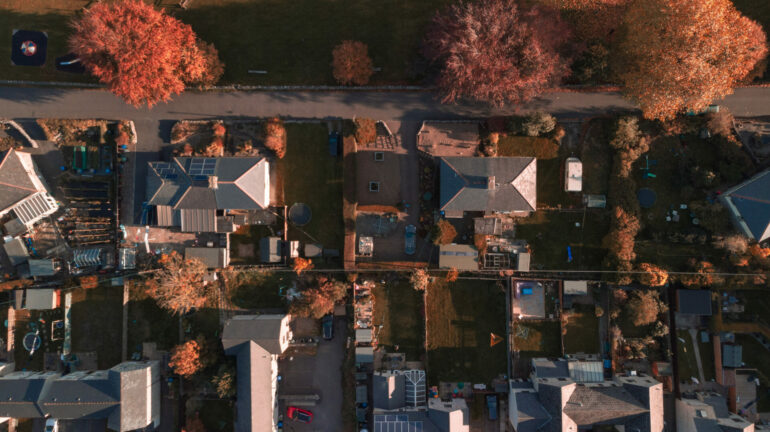Over the past decade, the proportion of people aged 24-64 living in their own home has fallen and the proportion renting privately has risen, the 2021/22 English Housing Survey has revealed.
Currently 19% rent privately, 35% own outright, and 30% have a mortgage.
On average, mortgagors spent 22% of their household income on mortgage payments in 2021/22, whereas if you exclude housing support, private renters paid 38% on rent.
In 2021-22, there were around 852,000 recent first-time buyers – down 100,000 in a year. Their average age was 34.
People with mortgages are concentrated in the two fifths of highest earners.
Sarah Coles, senior personal finance analyst, Hargreaves Lansdown, said: “For anyone who owns their own home, and isn’t moving up the ladder, years of runaway house prices have made them feel richer and more secure.
“However, for those who are struggling to buy their first home, it has had precisely the opposite effect. More people are renting later in life, which comes at a horrible cost, and for those who make the leap into home ownership, it also raises new risks.
The rise of renting later in life
“The proportion of people renting privately doubled during the 2000s, and while it has levelled off at around a fifth of households (29% in London), we’re seeing people renting later and later in life.
“Over the last decade, the proportion of people aged 24-64 living in their own home has fallen and the proportion renting privately has risen. The figures are highest among 24-45-year-olds, where those who live in their own home has fallen from 64% to 59% – and private renters have risen from 20% to 25%.
Paying the price
“We’re paying a huge price for this, because in 2021/22, renting was far more expensive than paying the mortgage. At that stage, the average mortgage cost £154 a week, while the average rent was £173.
“Given that those with mortgages tend to have higher incomes, the burden on renters is even higher. On average, mortgagors spent 22% of their household income on mortgage payments, whereas rent payments, excluding housing support, was 38% for private renters.
“They also suffer the consequences of living in lower quality property. While overall 14% of homes don’t meet the Decent Homes Standard, this rises to 23% in the private rented sector. It has an impact on energy efficiency too, because those in rented property are likely to be in less efficient, and colder homes.
“And the costs aren’t just financial. Renters also tend to move far more often, which makes it difficult to put down roots. This can cause problems for everyone, especially if rising rents force them into a continual cycle of renting smaller and smaller homes, further and further from work. It also raises particular issues for the 32% of private renters who have children and risk having to uproot them from school when their tenancy comes to an end.
“As a result of the fact that rent is so expensive, tenants have their budgets stretched horribly thin. There’s a real struggle to make ends meet, let alone save for the future, which is one reason why only 52% of them have savings – compared to 78% of those who live in their own home. It’s particularly worrying at the moment, because rising prices leave far more renters with nowhere to turn and nothing to fall back on. It also makes saving up for a property deposit incredibly difficult.
More difficult to buy
“The combination of over-stretched renters and runaway house prices has made it ridiculously hard to get onto the property ladder. In 2021/22, there were 852,000 recent first time buyers – around 100,000 fewer than a year earlier. They had to wait longer to get into this position too, so their average age was 34. It’s hardly surprising it takes so long to save up when you consider that the average deposit was £43,693.
“It means the door is closing on all sorts of would-be buyers. It becomes far more difficult to buy alone: only 29% of first-time buyers were one-person households. It also means you need to be a higher earner. People with mortgages are concentrated in the two fifths of highest earners (40% were in the top income quintile, while 29% in the second highest).
“It means people are making compromises with real consequences. They’re having to pay the mortgage for longer, so of those first-time buyers who had a mortgage, over half (56%) had a repayment period of 30 years.
“They’re also having to buy with a deposit that makes up a smaller percentage of the property value. Around two thirds of first-time buyers (68%) paid a deposit of less than 20%, and more than a fifth (22%) paid less than 10%. Unfortunately, borrowing more means facing higher mortgage payments, and at a time of rising rates this raises real risks for those who need to remortgage. Meanwhile, owning a smaller stake in the property means that if we face a period of falling prices, more new buyers may risk falling into negative equity.”



